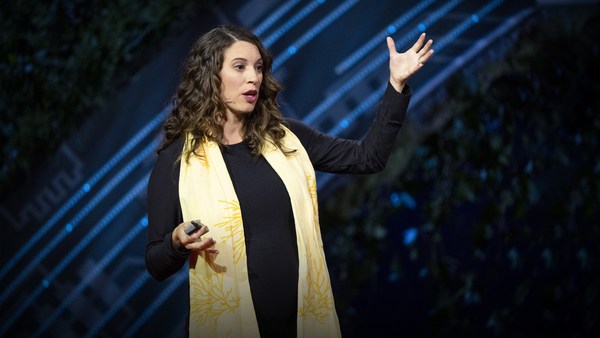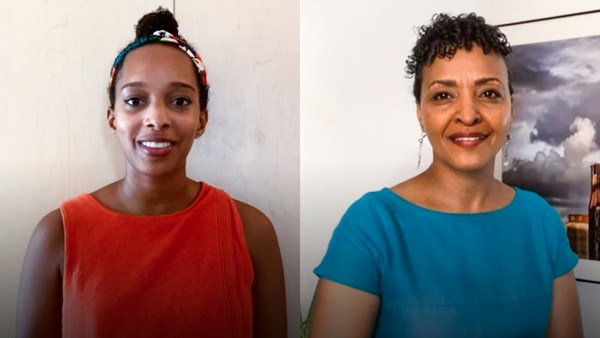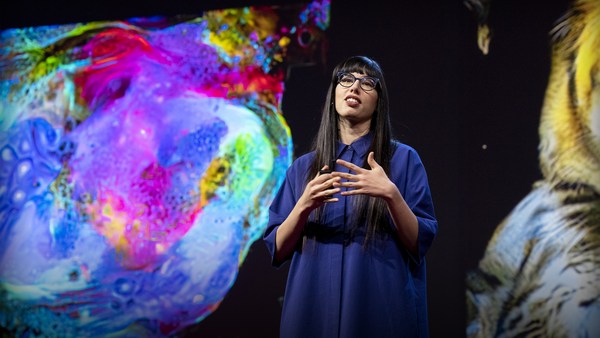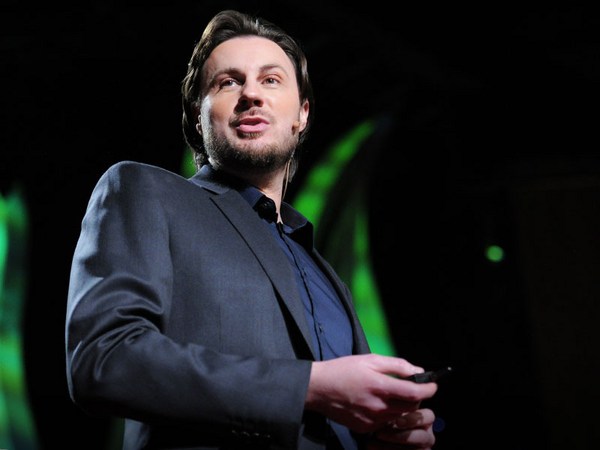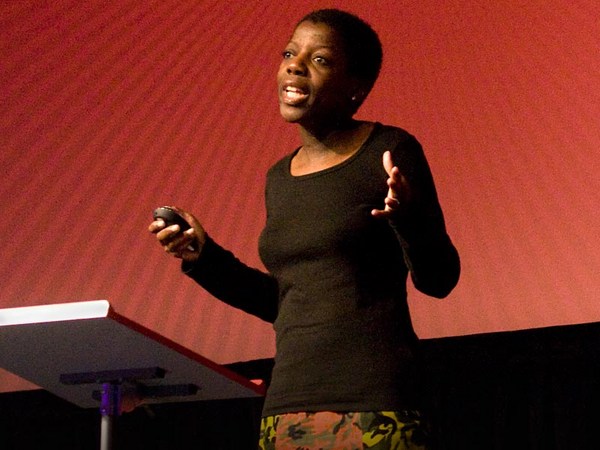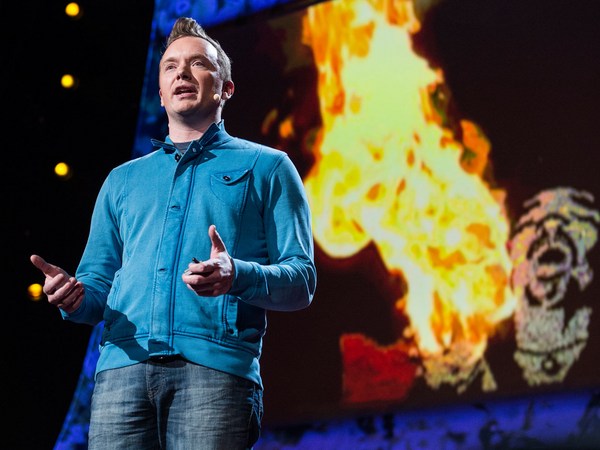When it comes to climate, how do we stop preaching to the choir? What can we do to grab the attention of those individuals who are disengaged? I ask these questions as an artist, as an educator and as a lifelong resident of Miami, Florida, one of the most climate-vulnerable cities in the United States.
In Miami, we're already seeing storm drains that erupt with water after heavy rainfalls, and cars and properties that are damaged due to flooding from high tide. And we've all seen the devastation of Hurricane Ian as it barreled at 150 miles an hour, bringing 10 feet of storm surge to the Gulf Coast, just two and a half hours from my home.
My home sits at six feet above sea level. But today, we see cranes populating [the] Miami skyline, building more and more skyscrapers at the water’s edge. Thanks to this brazen overdevelopment, many Miamians aren't aware of the threat that sea level rise poses to their families, their homes and their communities. I myself wasn’t aware of just how dire Miami’s situation was until I traveled to Antarctica.
I went there in 2006 as part of the National Science Foundation Antarctic Artists and Writers Program. I spoke with scientists there and I learned just how vulnerable my city was. I was standing on the very ice that threatened to melt and drown the only place I've ever called home. So I took that ice and I made art with it. I took ice that glaciologists brought back from their field stations and melted it to create a series of Antarctic ice paintings, paintings made in Antarctica with Antarctica and about Antarctica. But they weren't just about Antarctica. They were about where Antarctica was going.
I returned to Miami transformed by that experience and pivoted my art practice to one where for 15 years now I’ve been trying to ask, how do we best engage the public around climate issues? Just a few years ago, I worked with the village of Pinecrest to develop a socially engaged art project that would make sea level rise impossible to ignore. We called it The Underwater Homeowners Association. Let that sink in for a second.
(Laughter)
We used those Antarctic ice paintings as the backdrop for yard signs that would map the elevation of people's homes. People use an app to find out how many feet above sea level their homes are. And then they would either paint that number on a yard sign or take home a pre-made one and they would place it in their front yards.
Now, you can imagine, when your neighbor from across the street asks you what that number eight in front of your house means, it's a perfect opportunity for you to tell them that they too live at eight feet above the sea. And it is in their interest, in their personal and financial interest, to understand the consequences of a warming planet. The strangeness or weirdness of these signs -- remember, these aren't political signs or "home for sale" signs, these are elevation markers -- is a key component to a socially engaged project that makes random people stop long enough to ask, "What is this about?" And it is in that way that many of my neighbors realized that although they lived farther inland from the ocean, they weren't necessarily less vulnerable to the rising seas.
You see, in Miami, elevation generally increases as you move inland until you hit this ridge and then it starts dropping as you approach the Florida Everglades, the River of Grass, or what I call Miami's second coastline. As these yard signs were popping up -- house by house, block by block -- I worked with schools to paint four street intersections with their respective elevations. We call that road Elevation Drive because it showcased the elevation of a neighborhood, rising as you drove inland and then dropping after you crossed that barely noticeable ridge.
And as if being flanked by bodies of water on both sides wasn't enough, Miami has a third coastline. It's the water beneath our feet in the aquifer. This is where saltwater intrusion is presently threatening our drinking water. And it is the reason why, when it comes to sea level rise, dams are not a solution for Miami. You see, my city is built on porous limestone rock, and the water will just come up through it.
Now, as information about this, about our project, started getting out, all hell broke loose. People started calling the mayor's office, "What are you doing? How are you supporting a project that's going to inherently diminish our property values?" And the realtors were aghast. "How are we going to make sales in the neighborhood?" This backlash, this desire to hide a number that's in every single one of our flood insurance documents made the city officials actually reconsider the support for the project. But by then it was too late. The project had broad community support. Hundreds of signs were all over the neighborhood. People wanted to do something.
So, we convened monthly Underwater Homeowners Association meetings where people came together and they learned from relevant scientists and experts and practitioners and ultimately began planning for a future with faulty septic tanks and risky real estate and water that would rise, but unlike a hurricane storm surge, will not recede.
I want to emphasize what I'm talking about here. I'm talking about social practice, about socially engaged art. The objects are important -- the yard signs, the street murals -- but the art is the process. The art lives in the interaction, in the community coming together to plan to strategize. It is in this way that socially engaged art provides a mechanism that brings different people together around a shared challenge. And importantly, it generates a sense of agency, of responsibility.
I first started working with my neighbors on environmental issues when I witnessed a destruction of wetlands on a drive down to the Florida Keys. Miles upon miles of mangroves were being bulldozed to make space for a wider road. And I imagined someone driving down that road in the future being clueless about the ecosystem that once thrived there. Just like many of us today are oblivious to the nature we've already destroyed.
So I used eco art. I brought my neighbors, my South Floridians, on walks through majestic mangrove forests. There we were, knee deep in water, crawling through mangrove roots. And I would explain that these trees sequester carbon from the atmosphere. They support biodiversity, they protect us from storm surges. We collected mangrove propagules, seedlings, that we would then give to store owners on Lincoln Road, the busiest shopping area in Miami Beach. We asked those store owners to grow those mangroves as vertical nurseries right there inside their stores. Our volunteers put the seedlings in disposable cups and hung them on the merchant windows as installations that reference the city grid that displaced the mangroves on that very barrier island.
When the people walk by that store, it's really unexpected to see a bunch of mangroves in a window. So they ask a store owner, "What is this about?" The owner says, "These mangroves are reclaiming their island. Mangrove seedlings used to hang on this very location, on trees, before all of this concrete was poured." Well, when the installations came down after the seedlings were germinated, we planted them. Twenty-five acres of them on Biscayne Bay. But more importantly, we inspired thousands of South Floridians to become environmental stewards, to care for the environment.
We did this in partnership with dozens of schools, museums and libraries. And it wasn't just about creating ecosystems above and below the water line. It was about developing a cadre of eco emissaries, of creative problem solvers. Of Miamians, driven by empathy and love of community. Art did that. Art has that power. Art has the power to break down barriers and bridge divides. Art can help us see things in different ways. When you look at one of those yard signs with a number on it and ask, “What is this about?” -- that's the moment when the seed of awareness is planted in you. We've piqued your curiosity. When you're engaged in an eco art project and begin caring for mangroves, walking in that forest, collecting them, sharing, talking about them, installing them and then planting them, you begin to develop a personal connection with nature. Finding ways to provoke that moment of inquiry and importantly, creating pathways for further action, that's what socially engaged art does.
And it is my hope that all of us, across all sectors, use the power of art. That universal language, the power of art, to engage our communities. So that individuals can tap into their own creativity and work with others in finding innovative approaches to build a more just, a more loving and a more beautiful world.
Thank you.
(Applause)
